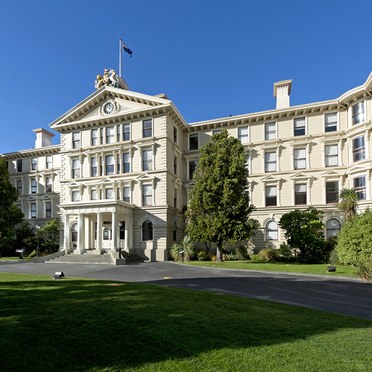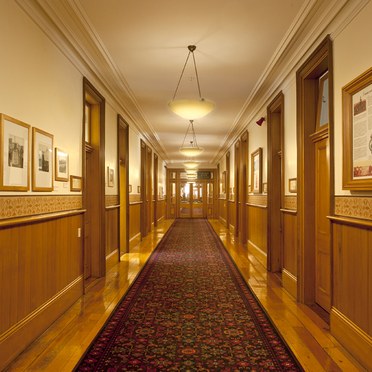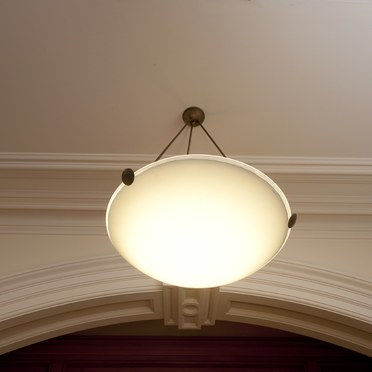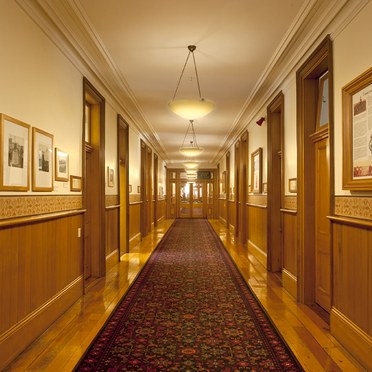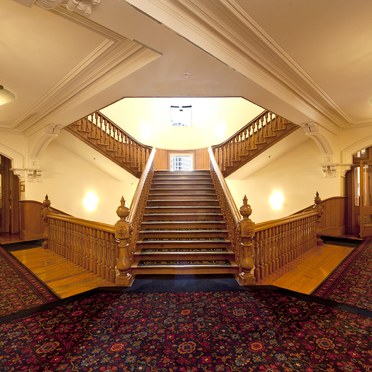Government Buildings, NZ - LED Retrofit
- Lamp efficacy
Lamp efficacy
Ensuring the lamp efficiently converts electricity into light (lm/W).
- Ballast classification
Ballast classification
Controlling the electricity supply to the lamp (Energy Efficiency Index).
- Luminaire distribution
Luminaire distribution
Controlling light emission using optics which bend and shape the light to the correct location.
- System efficacy
System efficacy
Combining optical and thermal control within the luminaire (luminaire lm/W).
- Presence/absence detection
Presence/absence detection
Presence: Lights automatically turn on/off with movement. Absence: Lights automatically turn off and must be manually switched on.
- Daylight detection
Daylight detection
Artificial lighting which responds to the natural light conditions.
- Constant illuminance
Constant illuminance
A function designed to produce correct light levels for the duration of the maintenance period.
- Task-scene setting
Task-scene setting
Allowing the user to set scenes and adapt the lighting to different tasks.
- Timed off
Timed off
Automatic cut-off can be installed to turn all lights off during unoccupied hours.
- Task lighting
Task lighting
Lighting task areas with the correct amount of light.
- Zoning of lighting
Zoning of lighting
Lighting is zoned according to area use.
- Maintenance schedule
Maintenance schedule
Maintenance must be performed in response to product age, performance and environment.
- Waste light
Waste light
Eliminating waste light which does not hit the intended target.
- Reflectance
Reflectance
Taking advantage of light which is reflected from the surface within the space.
- Visible smart metering
Visible smart metering
Results of actions can be quickly seen as increased or decreased energy use to encourage responsible energy consumption.
The Government Buildings Historic Reserve, more commonly referred to as the Old Government Buildings was commissioned in the early 1870s to house New Zealand’s civil service. It was constructed to resemble an Italian stone palace built almost entirely out of native kauri timber. Interestingly, if the building had been constructed out of stone as originally planned, it may not have survived subsequent earthquakes as it is situated near a major fault line.
Situated on Lambton Quay in Wellington, it was completed in 1876 and until 1998 was the second largest wooden building in the world. It now houses the Victoria University of Wellington's Law School and is Classified Category I by the New Zealand Historic Places Trust as one of New Zealand’s most important heritage buildings.
The original architect was William Clayton and contractors were Scouler and Archibald.
Brief:
To provide an LED retrofit for 322 aging pendants equipped with twin Dulux F type lamps with wire wound ballasts near the end of their economic life.
Proposed solution:
Thorn’s solution was to remove all lamps, lamp holders and ballasts and replace with LED panels and new drivers for each fitting, enabling the character of this important historic building to be preserved by retaining the existing luminaires. New Tridonic 34 Watt LED panels and drivers were installed.
Energy Comparison:
Existing Luminaire with 2x36W TC-FEL Lamps on Wire wound control gear | New LED Panel | |
Load/Luminaire | 89W | 34.1W |
Quantity | 322 | 322 |
Total Load (A) kW | 28.658 | 10.9802 |
Average burning hours/week | 70 | 70 |
Average burning hours/year (B) | 3640 | 3640 |
kWhr/annum (AxB) | 104315.12 | 39967.928 |
Electricity $0.12/kWhr | $12517.814 | $4796.1513 |
Savings per annum |
| $7721.663 |
Total Payback Period |
| 4.7 years |
The above calculations do not take into account annual maintenance savings of approximately $10K.

